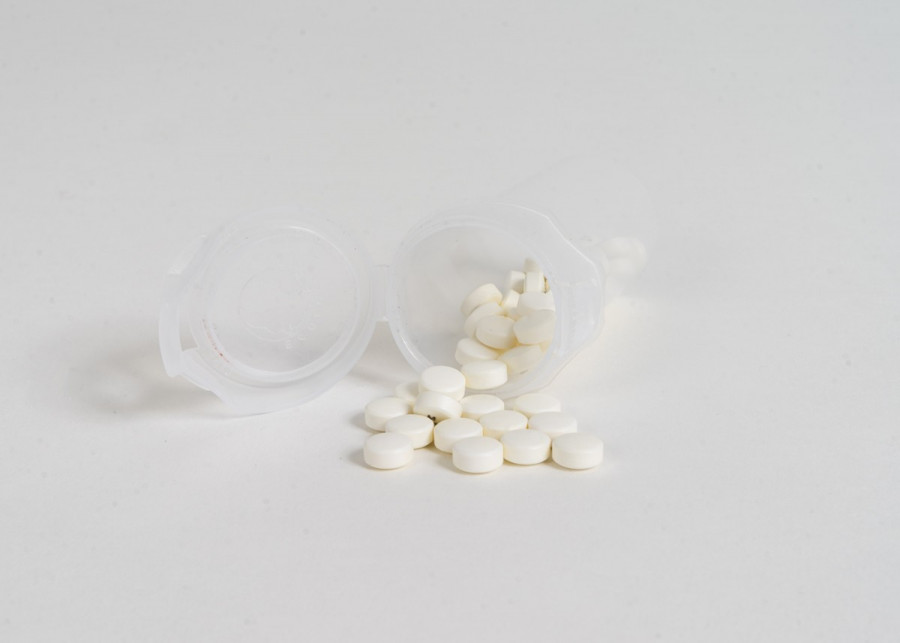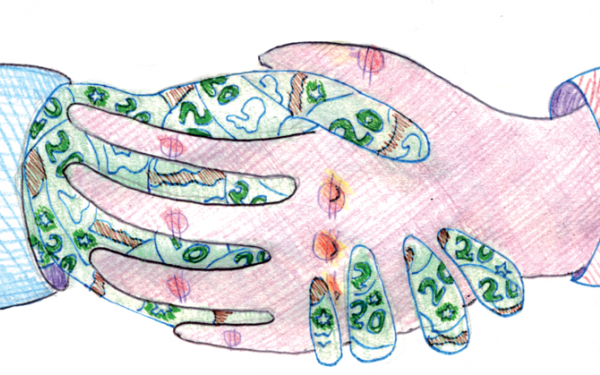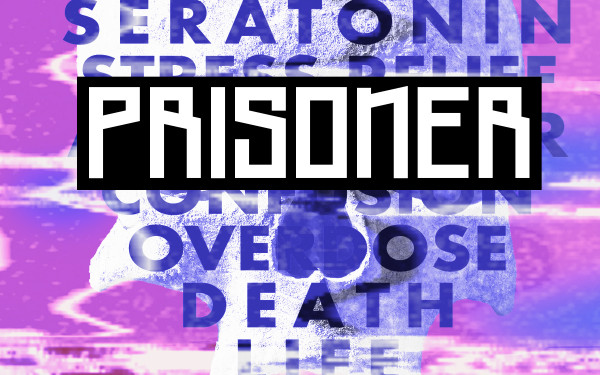Timeline of the Opioid Crisis in Canada
How Prescription Drugs, the Government’s War on Drugs, and Black Market Fentanyl Generated High Addiction Rates
This timeline examines the catalysts that generated an opioid epidemic in Canada, and services and circumstances that sprung from the growing death toll.
Our neighbours in the United States face a greater amount of opioid-related deaths, as they are the largest consumer of prescription opioids on a per-capita basis. Canada follows along as the second largest consumer of prescription opioids on a per-capita basis. However, Canada has a higher per-capita use of fentanyl compared to our neighbours.
This timeline looks into factors that furthered the epidemic—with the introduction of new opioids, government policies, and initiatives, such as safe injection sites, aimed to help diminish the rates of opioid-related deaths.
This is not all encompassing of every event or factor leading to the growing death toll in Canada due to opiates, as well as all of the initiatives aimed to relieve this toll. But it intends to highlight some of the factors and events stimulating an epidemic.
1992
American pharmaceutical company Purdue Pharma patents OxyContin, their brand named pill of oxycodone, promising a remarkable new way to treat pain. OxyContin later hits the shelves in 1996. When recommending the drug to medical professionals, Purdue Pharma downplays the addictive properties of the medication. This begins a long term abuse of physicians overprescribing opioids to patients, not knowing how strong of an addiction the drug creates.
2003
InSite, North America’s first safe injection site is founded in downtown Vancouver, an area facing the largest rates of opioid deaths in the country. This allows users to inject drugs, with first aid on site to handle any potential overdoses, and medical staff to provide addiction treatment and mental health assistance. Despite safe injection sites not being legalized, the site is permitted by the former Liberal government by exempting InSite from certain provisions relating to trafficking within the Controlled Drugs and Substances Act.
2006
InSite’s existence is put under threat after the Conservative government gains power. The Tories start a war on drugs that involves prosecuting low-level offenders. Harm reduction is also eliminated from Canada’s anti-drug policy, creating barriers for the Vancouver injection site and threatening the site’s immunity from the act.
2007
The war on drugs continues, as information about harm reduction is removed from Health Canada’s website. The National Drug Strategy’s name is changed to the National Anti-Drug Strategy.
2011
InSite’s establishment remains, as the Conservative government loses in their battle to shut down Vancouver’s safe injection site in Canada’s Supreme Court. Later the government imposes legislation making it difficult for other safe injection sites to open, despite the lives InSite has saved since its establishment.
2012
OxyContin is pulled from shelves in Canada by Purdue Pharma due to some opiate users crushing and snorting the green pill or injecting it for a stronger high. Purdue Pharma replaces OxyContin with OxyNEO, which is difficult to crush, snort or inject. Canadian provinces remove both OxyContin and OxyNEO from their public drug plans. Meanwhile, prescriptions for painkillers such as fentanyl and hydromorphone increase.
After OxyContin is removed from Canada’s legal market, space opens for counterfeit versions of the pill made with fentanyl instead, which is a drug that is much more potent than oxycodone. These pills are manufactured to look the same as OxyContin, shaped as a tiny, green pill with the same “80” written on it, representing the oxy dosage. They are sold as “greenies” or “shady eighties” across North America.
Counterfeit OxyContin enters the Canadian border from China. Labs in China are able to generate fentanyl analogues, utilizing the main ingredient to make analogues—drugs with similar chemical structures as pharmaceutical-grade versions, but with slight chemical modifications. One version of these unique illegally engineered fentanyl has the street name China White. Since fentanyl is cheaper than other opioids, such as heroin, it is often mixed in more expensive opiates so dealers don’t have to spend as much while still selling a drug with a strong high.
April 2013
The first known fentanyl bust in Canada occurs in April in Montreal. Police raid a clandestine laboratory located in Pointe-St-Charles, seizing around 200,000 pills containing the drug, also finding counterfeit versions of Cialis and Viagra. Unaware they need to wear hazmat suits, officers become ill due to exposure to the strong.
June 2013
The Conservative government imposes a new law titled “The Respect For Communities Act,” generating more rules for safe injection sites to face. The law requires that city officials and police to be more involved, which at the time failed to facilitate collaboration, as many politicians and police were opposed to safe injection sites.
2014
When asked about the profit the company made from selling OxyContin, Purdue Pharma Canada chief executive officer Craig Landau said, “I’m honestly not certain. I don’t know. It’s in the billions of dollars for sure,” he tells a House of Commons committee reviewing prescription-drug abuse.
The profits from OxyContin are colossal and keep on climbing. Since the 1990s in both Canada and the United States—where the drug was also patented—Purdue Pharma has earned more than $30-billion U.S.
As the epidemic originated in the west, hitting Alberta and British Columbia at accelerating rates, Ontario takes a hit from overdose deaths, specifically from fentanyl. In 2014, fentanyl is the leading cause of opioid deaths for the first time in the province. Fatal overdoses from fentanyl occur in communities in Toronto, Kingston and the region of Niagara.
December 2014
Alberta’s provincial government issues province-wide alert to doctors, after illegal fentanyl starts being sold and used in the province.
2015
A Globe and Mail investigation finds that doctors wrote enough opioid prescriptions for one in every two Canadians, continuing the rates of overprescription of opioids dating back to the 90s. Doctors prescribe 19.1 million opiate prescriptions to people in Canada this year, surpassing rates in 2014—where doctors gave out 18.7 million prescriptions. Overdose rates result not only from prescriptions, but also from illegal opioids, as the Canada Border Services Agency makes just less than 11,000 illicit-drug seizures within the year, with about half of the seizures.
2016
This year in Canada there are 2,816 apparent opioid-related deaths. Fentanyl is on the rise, as one in every three overdose deaths in Alberta occurs in Calgary. Since the first drug bust of fentanyl in Montreal, 58 seizures of fentanyl occur across the country.
Canada begins to add legislative and regulatory changes to respond to issues stemming from the opioid epidemic, allowing safe injection sites to operate by removing application requirements to receive an exemption from the Controlled Drugs and Substances Act for a site to operate.
2017
Nearly 4,000 Canadians die this year because of opioid-related deaths. Seventy-two per cent of these deaths involved fentanyl or fentanyl analogues. This is a 34 per cent jump from the death rates the year before. British Columbia experiences the highest rate, with 1,399 opioid-related deaths in 2017, compared to 974 in 2016.
The 2017 Canada Guideline for Opioids for Chronic Non-Cancer Pain is made, shedding light on physicians overprescribing opiates, with an aim to promote awareness to reduce over prescriptions of the drug.
April 2017
Purdue Pharma settles a class-action lawsuit, paying $20 million. The lawsuit blames Purdue Pharma of knowing how addictive OxyContin is, but not admitting the risk of addiction. This case represents about 1,500 Canadians that became addicted to OxyContin after being prescribed the drug by their doctors.
British Columbia’s provincial health officer declares opioids a public health emergency on April 14, after a spike in overdoses and deaths.
May 2017
The Government of Canada passes the Good Samaritan Drug Overdose Act. This grants legal protection from those seeking help during an overdose emergency, diminishing fears of getting charged for drug possession for calling 911 to prevent an overdose.
Alberta declares opioid abuse a public health crisis, as the number of death rates increases. The province also allots $30 million to tackle the crisis, and initiates a commission to handle the crisis.
September 2017
Royal Canadian Mounted Police launch at least 20 investigations on dozens of vendors with shipments of fentanyl originating from China. The RCMP, CBSA and Canada Post team together to plan the most effective way to flag parcels shipped from China from three mail sorting centres located in Montreal, Vancouver and Mississauga, ON.
This month 42 kilograms of carfentanil is found in Durham, ON. Carfentanil, 100 times more potent than fentanyl it’s derived from, is so deadly some countries have experimented with using it as a chemical weapon. This isn’t the first time the drug had been found in the city, as local police seized enough carfentanil to wipe out a small city a month prior.
October 2017
Canada’s neighbour in the south declares opioid deaths in the United States a national public health emergency, as Donald Trump addresses an audience at the White House. The U.S. faces a higher number of deaths than Canadians, with more than 40,000 people in America dying from opioid-related deaths in 2017.
November 2017
By this time, due to legislative changes, 22 safe injection sites, with three interim ones, are operating in Canada. On Nov. 4, NDP Leader Jagmeet Singh addresses delegates and supporters in Vancouver, calling on the federal government to declare opioid addiction a national crisis. Singh receives a standing ovation after he says the NDP’s would decriminalize the possession of all drugs. “I saw that people’s lives are being destroyed while the federal government does little or nothing and it breaks my heart,” Singh said. “I saw with my own eyes the devastation of the opioid crisis.”
December 2017
Then-Minister of Health and Long-Term Care Eric Hoskins declares opioids a public health emergency in Ontario.
The British Columbia Centre for Disease Control announces it intends to install three vending machines to help dispense hydromorphone pills to people at a greater risk of overdose. Hydromorphone is a strong prescription opioid used for opioid replacement therapy; and experts say it can reduce addiction to street drugs cut with fentanyl or similarly potent substances.
March 2018
The federal government promises changes towards drug laws, removing barriers doctors face prescribing methadone or heroin to ease into ceasing its use. The government also promises to also
allow these opioids to be given outside of hospitals, such as in addiction clinics, allowing for users to slowly wean themselves from strong to weaker opioids.
July 2018
Between January and June of this year there are 2,066 opioid-related overdose deaths in the country, with British Columbia facing the highest rates with 754 deaths (however this province records all illicit drugs in the death toll, not just opioids), and Ontario following with 638 deaths.
The Quebec government plans to put $35 million towards handling addiction in the province, $23 million of which will go towards preventing opioid overdoses.
August 2018
British Columbia Attorney General David Eby launches a proposed class action lawsuit against dozens of pharmaceutical companies, including Purdue Pharma, alleging that opioids were wrongly marketed to be represented as less addictive compared to other drugs, arguing this helped initiate an overdose crisis that killed thousands. The proposed suit also claimed pharmacies like Shoppers
Drug Mart in Quebec, known as Pharmaprix, should also face lawsuit, as they were aware of the amount of opioids being circulated by the legal market.
As opioid-related deaths plateau in Nova Scotia, Chief Medical Officer Dr. Robert Strang attributes this to harm reduction efforts the province has made. Between January and August this year, there
were 38 opioid overdose deaths in the province, maintaining the province’s average since 2011. Last year, Nova Scotia experienced 63 opioid-related deaths.
September 2018
Rhodes Technologies Inc.—a subsidiary of Purdue Pharma—obtains the patent for naloxone, an antidote for opioid overdoses. Purdue Pharma also donates $3.4 million to a non-profit drug developer generating a nasal spray that is an over the counter version of Naloxone, which amounts to a retail price of $140 U.S.
December 2018
Chief of Kwanlin Dun First Nation in Whitehorse Doris Bill says opioids are taking a toll in the Yukon. Calling it an epidemic in the territory, she says there aren’t enough people discussing the problem. Yukon’s Chief Medical Officer of Health Brendan Hanley said there were 16 fatal opioid overdoses, 12 being fentanyl-related, since early 2016. The territory agrees that Yukon is in an opioid crisis and presents a plan of action to address it, with the government expanding access to naloxone kits, support drug-checking services and education about substance abuse in schools.
At the beginning of December, Health Minister Ginette Petitpas Taylor also tells the House of Commons that declaring opioids a “public health emergency” in Canada won’t help the problem. Despite Pepitipas’ comments the government of Canada’s website states opioid abuse is a “national public health crisis”, making the federal government’s classification of the epidemic unclear.
Correction: A previous version of this article stated that Canada was the largest consumer on a per-capita basis. In fact, Canada is the second largest consumer behind the United States. The Link regrets these errors.


_600_832_s.png)




